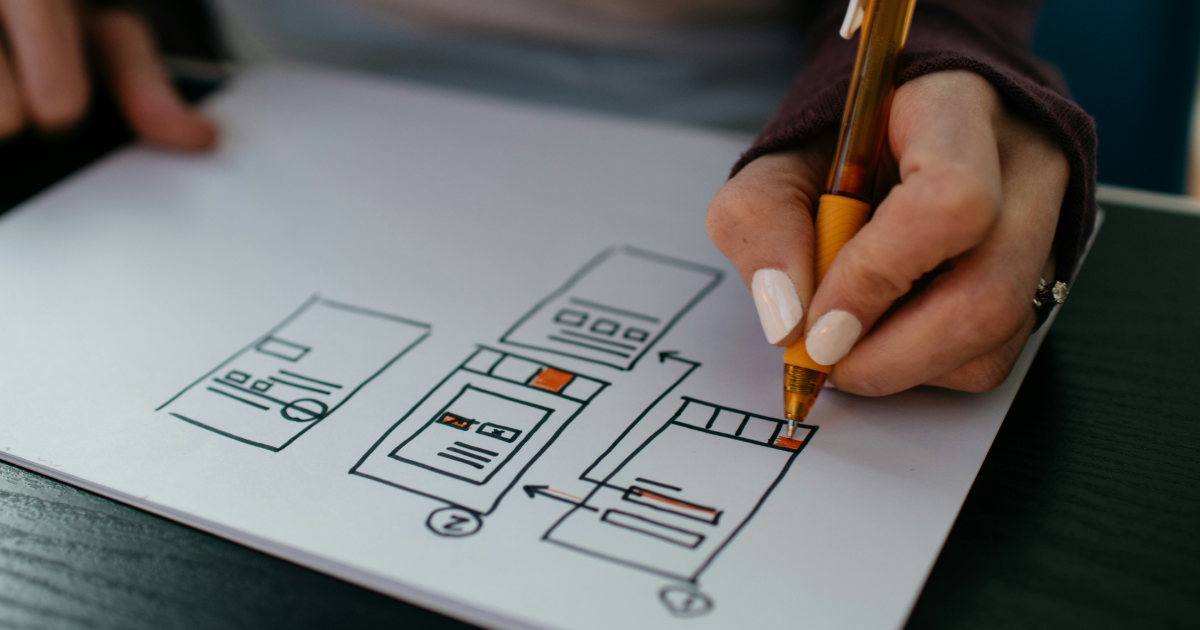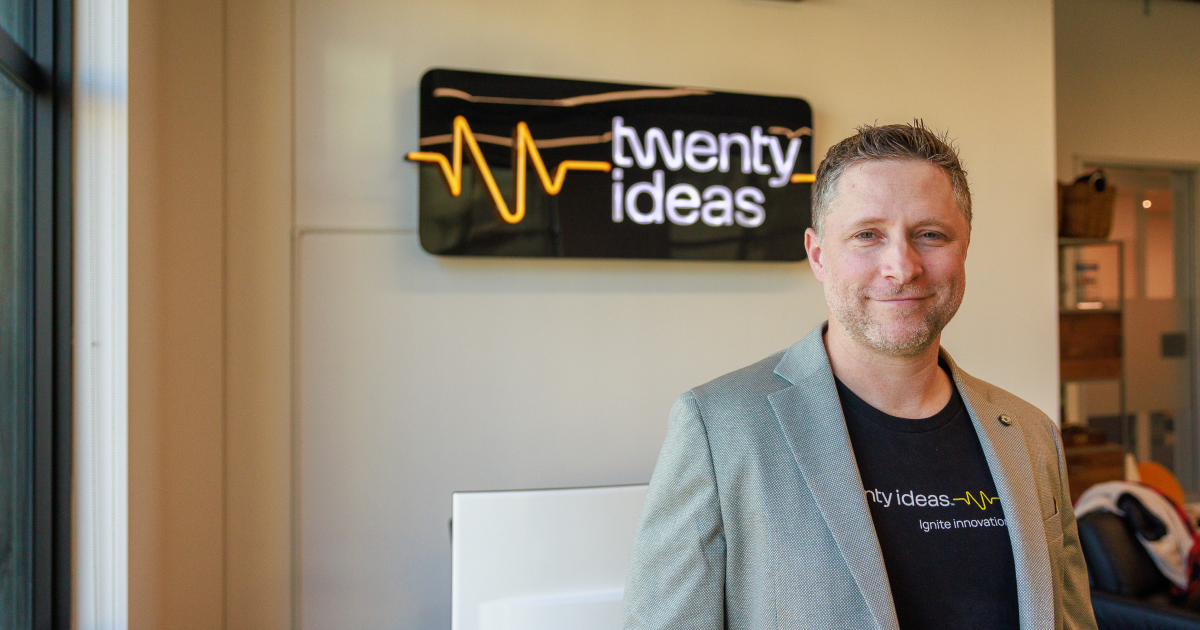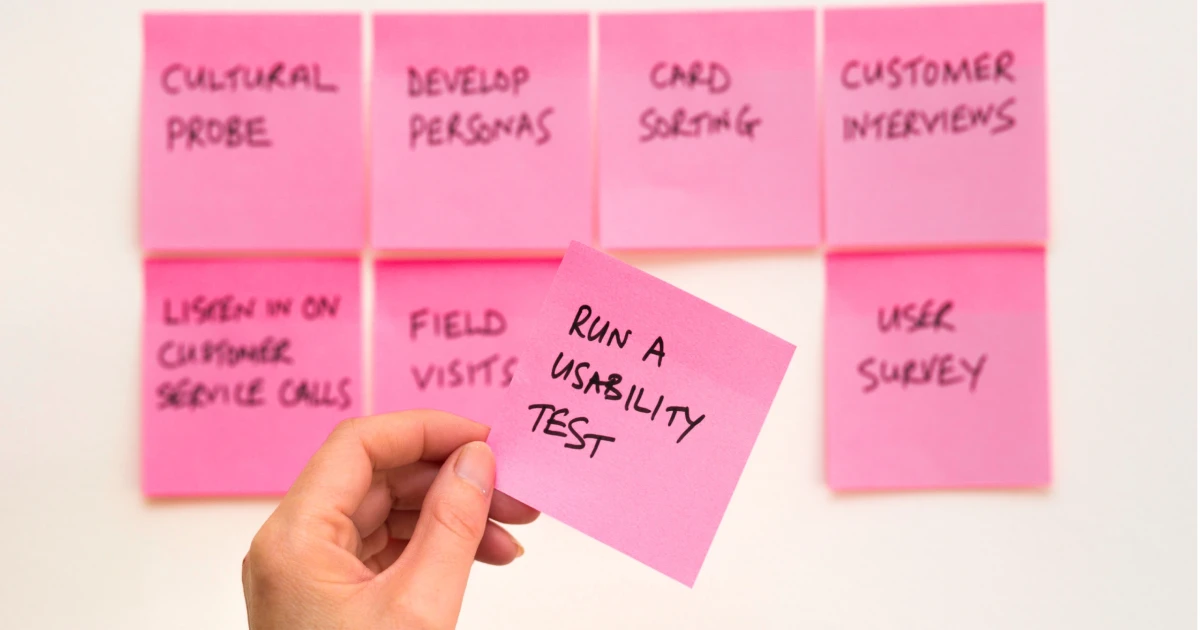
A tech startup's guide to product discovery
Sep 13
14 min read
The world of product development starts with one critical step: product discovery. When executed effectively, product discovery yields long-term benefits, empowering companies to create products set up to succeed.
Essentially, product discovery involves learning about what customers want and need before actually creating a new product. By gathering these important insights and testing ideas, companies can make sure they're building products that people actually want (and will buy/use!).
In this article, we will explain what product discovery is and why it is important in the product development process. We will also provide a step-by-step guide to the product discovery process and share some popular strategies for success.
What is product discovery?
Product discovery is a stage within product development that involves researching, understanding, and defining the needs, problems, and desires of potential customers in order to create successful and impactful products.
It focuses on gathering insights, generating ideas, and validating concepts before investing significant resources into product design and development. Product discovery involves techniques such as validating the market, understanding customer needs, conducting research, analyzing competitors, and gathering feedback.
By engaging in product discovery, companies can gain a deep understanding of their target audience, identify market opportunities, and make informed decisions to create products that effectively address customer needs and preferences.
The importance of product discovery in the product development lifecycle
Product discovery is all about prioritizing the customer and ensuring their needs are met. This comprehensive process helps companies determine if their product idea has the potential to succeed. By understanding the market landscape and identifying unique opportunities, companies can create a product that stands out from the competition.
Through the exploration of different concepts and gathering valuable insights, companies refine and enhance their ideas. This iterative process ensures that the final product offers something distinct and valuable to customers. Product discovery saves time and resources by addressing potential issues early on, preventing costly mistakes and the need to rework in later stages of development.
Product discovery also fosters collaboration among team members. By involving individuals from various disciplines, everyone can work together towards a shared vision. This collaborative approach enhances communication and synergy and ultimately leads to a more successful outcome.
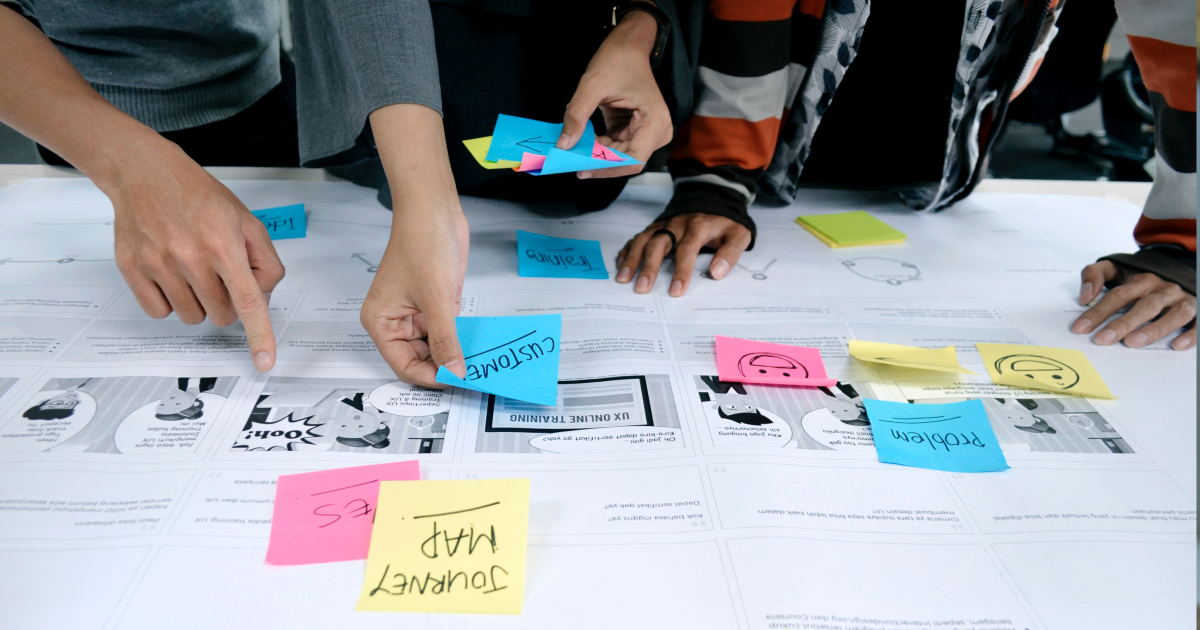
How product discovery leads to success in product development
Product discovery plays a pivotal role in unlocking success in product development. Here's how effective product discovery can contribute to achieving positive outcomes:
Understanding customer needs
When companies take the time to deeply understand their customers' needs, pain points, and preferences, they're setting themselves up for success.
By conducting thorough user research, analyzing the market, and actively seeking customer feedback, teams can gather valuable insights about what makes them tick. These insights serve as the foundation for developing products that directly address those customer needs and pain points.
Discovery is all about preparing to create solutions that hit the mark and resonate with the target audience. And when companies can do that, they're well-positioned to deliver valuable products and achieve success in the market.
Identifying market opportunities
Through thorough research and analysis, product discovery helps identify untapped market opportunities by uncovering hidden gems that competitors might have missed.
In market research, companies explore different customer segments, study market trends, and analyze what competitors are bringing to the table. This detective work helps them spot gaps in the market and identify areas where their product can truly shine. By taking this proactive approach, companies can develop innovative and differentiated products with a higher chance of success.
Validating concepts
One of the primary goals of product discovery is validating (or invalidating) product concepts before going all-in with development. It's like taking a test drive before committing to a big purchase.
Teams do this by creating prototypes, conducting user testing, and setting up feedback loops. They're constantly iterating and refining their ideas based on what they learn along the way to make sure the final product hits the mark.
By involving customers early on and aligning with their expectations, companies can significantly reduce the risk of launching a product that falls flat in the market. It's a smart move that saves time and money, and keeps customers happy.
Mitigating risks and reducing costs
As companies conduct thorough product discovery, they can mitigate risks and reduce costs associated with product development.
By spotting potential challenges, technical constraints, or market limitations early on, teams can make smart decisions and adapt their strategies accordingly. This proactive approach to risk management significantly reduces the likelihood of product failures or expensive mistakes down the road.
Enhancing cross-functional collaboration
When it comes to product discovery, getting different teams to collaborate is key. By bringing together personnel from product management, design, engineering, marketing, and other relevant departments, everyone can develop a shared understanding and vision for the product.
This collaborative environment helps communication flow smoothly, ensures everyone is on the same page, and fosters teamwork. Ultimately, it leads to a more cohesive and successful product development process.
Iterative improvement
Product discovery embraces an iterative approach to product development that keeps things moving forward. By diligently collecting user feedback and data throughout the discovery process, teams can fine-tune and enhance their product offerings. This ongoing feedback loop guarantees that products are always evolving and adjusting to the ever-changing market landscape, resulting in happier customers and sustained success in the long run.
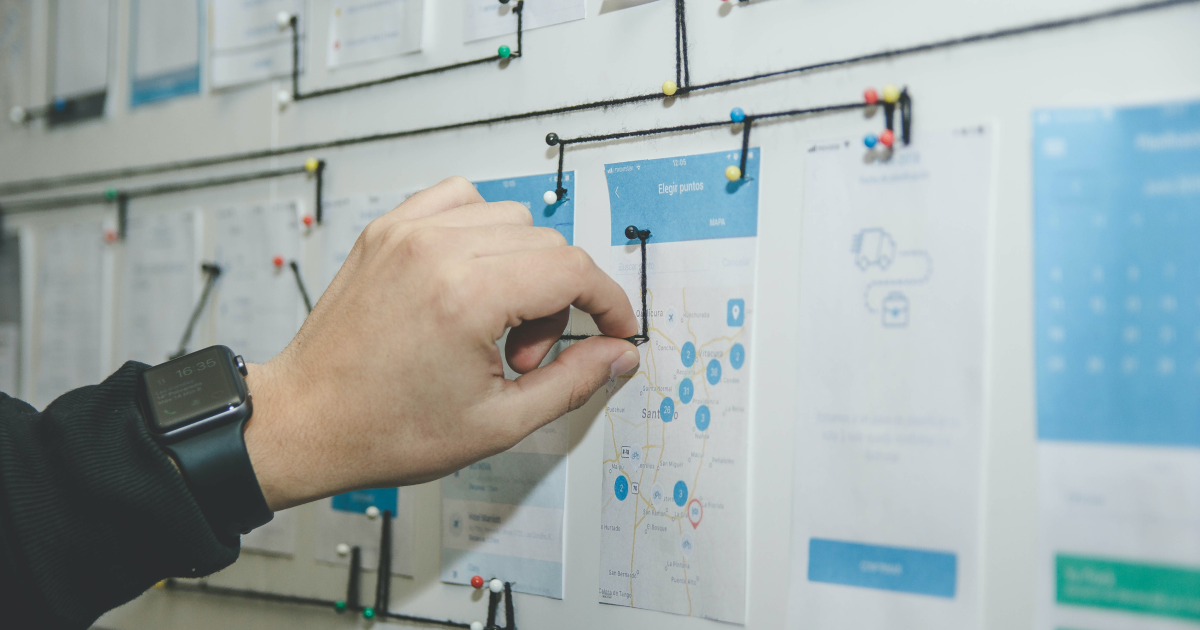
The 10-step product discovery process
The product discovery process consists of several stages and key steps that help guide the development of successful products.
While the specific implementation may vary across organizations, the following outline provides a general overview of the stages and key steps involved:
1. Research and understanding
By investing time and effort in this research phase, you'll be equipped with the necessary knowledge to make informed decisions and develop a product that truly meets your customers' needs.
To begin, it's important to conduct thorough research and gain a solid understanding of your target market and customer segments. This involves:
- Identifying the specific market you want to target and the different customer segments within that market.
- Conducting user research to gain valuable insights into your customers' needs, pain points, and behaviors. This can be done through surveys, interviews, and observation.
- Analyzing market trends to understand the current landscape, including any emerging opportunities or potential challenges.
- Assessing the competitive landscape to identify your competitors and understand their strengths, weaknesses, and strategies.
- Examining the industry dynamics to stay informed about the broader context in which your product will operate.
2. Problem definition
Once you have gathered and analyzed all the research findings, it's time to identify the core problems or opportunities that need to be addressed. Here's what you need to do:
- Synthesize the research findings by taking a comprehensive look at all the data and insights you have gathered from your research. Look for patterns, common themes, and recurring issues that stand out.
- Identify the core problems or opportunities based on the research findings. Pinpoint the key challenges or opportunities that your product should focus on. This step involves distilling the wealth of information you have gathered into a clear and concise understanding of the main issues at hand.
- Craft a problem statement that succinctly describes the challenge or opportunity you are aiming to solve. The problem statement should be specific, measurable, and actionable.
- Clearly state the desired outcomes or goals you hope to achieve by addressing the identified problem or opportunity. These outcomes should be aligned with your overall product vision and the needs of your target customers.
3. Ideation and concept generation
Now that you have a clear understanding of the problem at hand, it's time to generate a wide range of ideas and potential solutions. Here's how to go about it:
- Encourage creativity and out-of-the-box thinking by generating as many ideas as possible. Brainstorming sessions can be a great way to gather input from cross-functional teams, as different perspectives can lead to innovative solutions.
- Encourage collaboration and create an environment where diverse teams can contribute their unique expertise and insights. This collaborative approach can spark new ideas and lead to more holistic and comprehensive solutions.
- Once you have a pool of ideas, it's time to prioritize and refine them. Consider factors such as feasibility (can the idea be implemented?), desirability (does it meet customer needs and preferences?), and business viability (is it financially viable and aligned with your business goals?). This evaluation process helps you identify the most promising ideas for further development.
4. Concept validation
Concept validation can increase the chances of developing a product that meets user needs and delivers a positive user experience. To ensure that your ideas are practical and meet user needs, follow these steps:
- Create prototypes or mockups of the selected concepts. This will help visualize and demonstrate how the product would work.
- Conduct user testing by involving your target audience and gathering their feedback. This feedback will provide valuable insights into the effectiveness and usability of the concepts.
- Use the feedback and insights gathered from user testing to iterate and refine the concepts. Make necessary adjustments and improvements to align the product with user expectations and preferences.
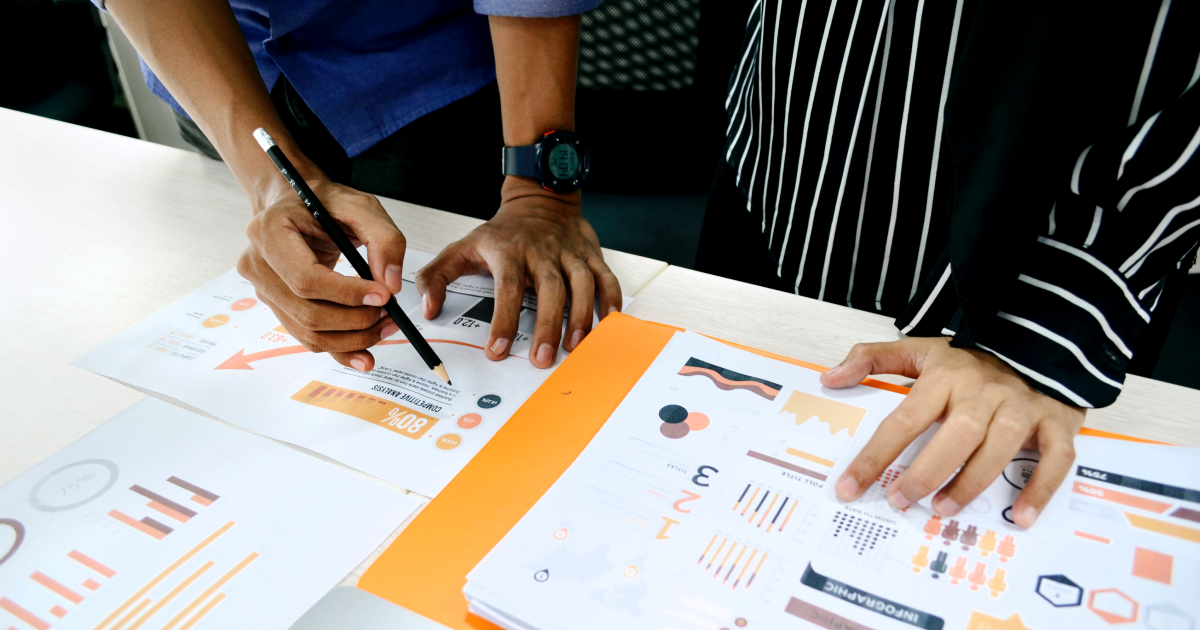
5. Business and market analysis
By conducting a comprehensive business and market analysis, you can make informed decisions, identify potential risks and opportunities, and ensure that your product aligns with market demand and has a strong business case.
Here are the steps to conduct a business and market analysis:
- Assess the potential market demand and viability of the product concepts. This involves evaluating the size of the target market, understanding customer needs and preferences, and determining if there is a demand for your product.
- Analyze the competitive landscape, market size, and pricing strategies. Identify your competitors, their strengths and weaknesses, and their pricing strategies. This analysis will help you position your product effectively and identify opportunities for differentiation.
- Evaluate the business case, including cost projections, revenue potential, and return on investment. Assess the financial viability of your product by estimating the costs associated with development, marketing, and distribution. Consider the revenue potential and calculate the expected return on investment to determine if the product is economically feasible.
6. Scope definition and planning
By defining the scope, creating a product roadmap, and planning the necessary resources and budget, you can ensure that your product development stays on track and aligned with customer needs and market dynamics.
To ensure a clear direction for your product development, follow these steps:
- Define the scope of the product, including its features, functions, and target release timeline. Clearly outline what your product will include and specify its key requirements. Set a realistic timeline for the product release to guide the development process.
- Create a product roadmap and prioritize features based on customer needs and market dynamics. Develop a roadmap that outlines the planned features and their order of implementation. Prioritize these features based on customer feedback and market demand to ensure that the most valuable and impactful features are developed first.
- Determine the necessary resources, such as team members, tools, and technologies, required for the development process. Establish a budget that covers the expenses associated with development, marketing, and other relevant activities. Create a timeline that outlines the different stages and milestones of the product development process.
7. Design and development
Adopting agile methodologies and fostering collaboration will help you build a high-quality product that meets user expectations and is delivered with the resources allotted.
To bring your product to life, follow these steps:
- Take the validated concept and transform it into a comprehensive design plan. This includes creating detailed specifications that outline how the product will look, function, and interact with users.
- Adopt agile development practices that emphasize iterative and incremental progress. Break down the development process into smaller tasks and continuously build, test, and gather feedback. This approach allows for flexibility and helps identify and address issues early on.
- Foster collaboration among different teams involved in the product development process, including design, engineering, and any other relevant departments. Effective communication and coordination are crucial to ensure that the design and development align with the product vision and meet user requirements.
8. Testing and iteration
Continuous improvement based on user feedback and market insights will result in a more successful and user-centered product.
To ensure a high-quality product and meet user expectations, follow these steps:
- Conduct comprehensive testing to identify and resolve any issues or bugs. This includes both automated and manual testing to ensure the product performs as intended and is free from bugs or errors.
- Provide a limited release of the product to a group of users and gather their feedback and insights. This user feedback is invaluable in identifying areas for improvement and understanding user preferences and needs.
- Analyze user feedback and market insights to identify areas where the product can be enhanced or optimized. Use this information to drive iterative development cycles, implementing changes and improvements that align with user expectations and market demands.

9. Launch and iterative Improvement
By planning and executing an effective marketing strategy, monitoring user adoption and feedback, and continuously gathering and analyzing data, you can optimize your product's performance and drive iterative improvement.
This iterative approach ensures that your product evolves to meet the changing needs of your customers and stays competitive in the market. To successfully launch your product and drive continuous improvement, follow these steps:
- Develop a comprehensive marketing plan that outlines how you will create awareness, generate interest, and attract customers to your product. Coordinate marketing activities with the product launch to ensure a successful introduction to the market.
- Keep a close eye on how users are adopting and using your product. Gather feedback from customers to understand their experiences and gather insights for improvement. Monitor performance metrics such as user engagement, retention, and customer satisfaction to assess the product's success.
- Collect and analyze relevant data to gain valuable insights about user behavior, preferences, and market trends. This data will inform your decision-making process for future iterations and enhancements of the product. Use these insights to identify areas for improvement and prioritize new features or updates.
10. Post-launch evaluation
The last step in the process is to evaluate your efforts. By conducting a thorough post-launch evaluation, collecting user feedback, and planning for future iterations, you can continuously improve your product to better meet customer needs and enhance its overall performance. This iterative approach ensures that your product remains relevant, competitive, and aligned with the evolving market landscape.
Here are the steps to follow:
- Compare the actual performance of your product with the goals and metrics you set during the planning phase. Assess metrics such as user engagement, conversion rates, revenue generated, and customer satisfaction to determine if the product is meeting its intended objectives.
- Collect user feedback and conduct post-launch surveys to gather insights. This can be done through surveys, interviews, or online feedback channels. Pay attention to both positive and negative feedback to understand what aspects of the product are working well and where improvements can be made.
- Based on the evaluation and user feedback, pinpoint specific areas of the product that require improvement. Prioritize these areas and develop a plan for future iterations or updates. This could involve fixing bugs, adding new features, enhancing usability, or addressing any other shortcomings identified during the evaluation process.
Methodologies and frameworks for conducting product discovery
There are several methodologies and frameworks that can be used to conduct product discovery effectively. Here are some popular ones:
Design thinking
Design thinking is a human-centered approach that focuses on understanding user needs, generating ideas, prototyping, and testing. It requires empathy (to gain deep insights into users), defining problem statements, ideation, rapid prototyping, and iteration based on user feedback.
Lean Startup
The Lean Startup methodology emphasizes rapid experimentation and learning through validated learning. It involves building a Minimum Viable Product (MVP) to test assumptions, measuring feedback and data, and making data-driven decisions to iterate and pivot as necessary.
Agile
Agile methodologies, such as Scrum or Kanban, are often used in product development. Agile focuses on iterative and incremental development, cross-functional collaboration, and frequent feedback. It involves breaking down the product discovery process into smaller iterations called sprints and adapting the product based on continuous feedback.
Jobs-to-be-Done (JTBD)
The JTBD framework centers around understanding the "jobs" or tasks that customers are trying to accomplish. It involves identifying customer needs, mapping their journey, and developing solutions that address their specific jobs and outcomes.
Google Ventures (GV) Design Sprint
The GV Design Sprint is a time-constrained framework for solving problems and testing ideas quickly. It typically involves a multi-day workshop format where cross-functional teams collaborate to define challenges, ideate solutions, create prototypes, and test them with real users.
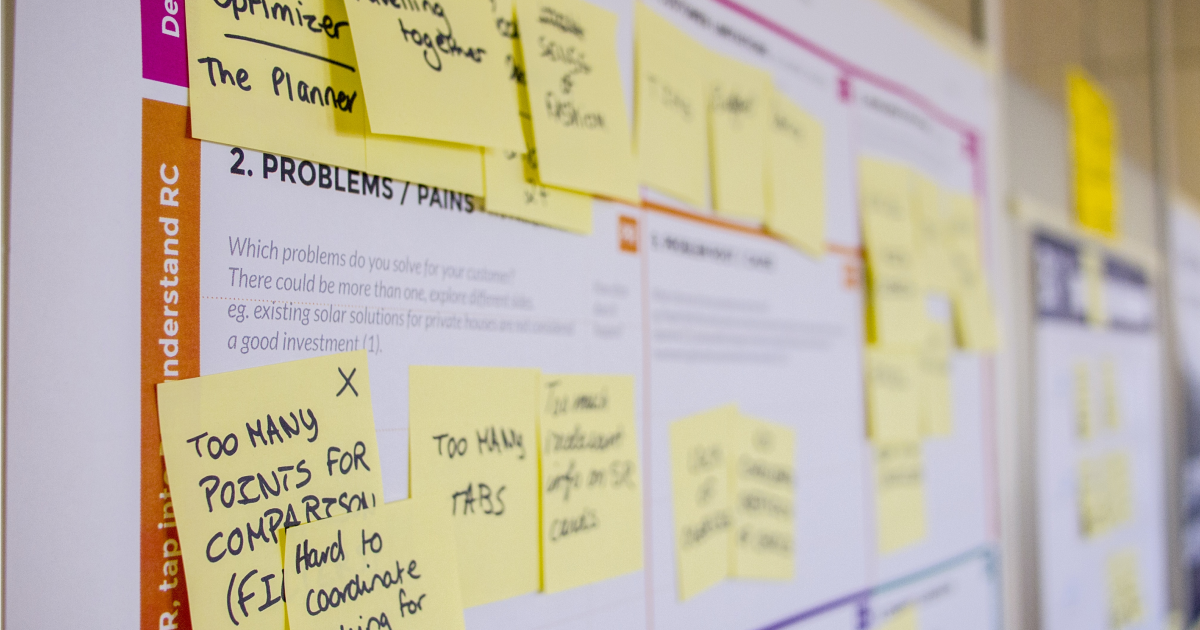
User-Centered Design (UCD)
User-Centered Design focuses on involving users throughout the product development process. It includes user research, personas, usability testing, and iteration based on user feedback. UCD aims to create intuitive and user-friendly products that meet user needs.
Double Diamond
The Double Diamond framework, popularized by the Design Council, involves four key phases: Discover, Define, Develop, and Deliver. It emphasizes divergent thinking in the discovery and development phases, followed by convergent thinking to refine and deliver the final product.
These methodologies and frameworks provide structured approaches to product discovery, helping teams gain insights, generate ideas, validate concepts, and iteratively develop successful products. Organizations often adapt and combine these methodologies based on their specific needs, industry, and product development context.
Want to learn more about product discovery?
The process of product discovery is essential for understanding what products best meet your needs or those of your customers. Whether you're new to the concept or looking to refine your approach, this page will provide valuable insights into effective product discovery methods.
Discover more of our guides on product discovery and elevate your knowledge and make more informed decisions:
Measuring product discovery success
Want to ensure your product innovation hits the mark? Dive into concrete metrics to measure discovery success and user value. Understand what truly matters in product development
Find out how to accurately measure the success of product discovery here
Agile & Lean principles in product discovery
Maximize your product's potential by merging Agile & Lean principles in product discovery. Learn how these methodologies drive efficiency and place customers at the heart of innovation. Streamline your strategy, prioritize user needs.
Learn how Agile & Lean principles can exist in product discovery here
The power of user research in product discovery
Unlock insights that drive product success with user research. Delve into its transformative role in product discovery, ensuring creations align with genuine user needs. Discover the secret to crafting products that truly resonate.
Discover the power of user research in product discovery here
How product discovery saves time & money
Trim costs and boost efficiency with product discovery. Explore how this crucial phase not only refines ideas but also prevents costly missteps. Dive in to see how early investment can save significant time and money down the line.
Find out how product discovery can save you time and money here
Final thoughts
Product discovery is crucial to the product development lifecycle. It ensures a customer-centric approach, validates market demand, generates and refines ideas, minimizes costly mistakes, and promotes alignment and collaboration.
Emphasizing product discovery in the product development process increases the likelihood of creating successful products that meet customer needs, drive business growth, and outperform competitors.
Twenty Ideas offers end-to-end product services that are designed to deliver robust, scalable, and innovative digital experiences that captivate your audience. Exploration and Discovery lie at the heart of our Twenty-to-One Process for digital product design and development. By bringing these proven methodologies and cutting-edge technologies to the table, we’ll work beside you to unlock the full potential of your product ideas and turn them into a reality that resonates with your target market.
Steve Ransom
In an organization renowned for astute insights, Senior Product Manager Steve Ransom specializes in unconventional ideas and lobs them from way outside the box in deep left field. He’s an annoyingly persistent advocate for continuous discovery, rapid prototyping, and frequent customer interviews. A Certified Scrummaster, his specialties include outcome and product curation, creative direction, writing, editing, marketing, publishing, and data analysis.
by this author

